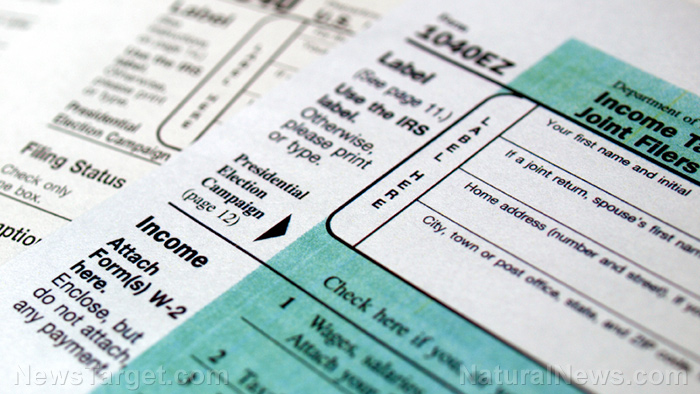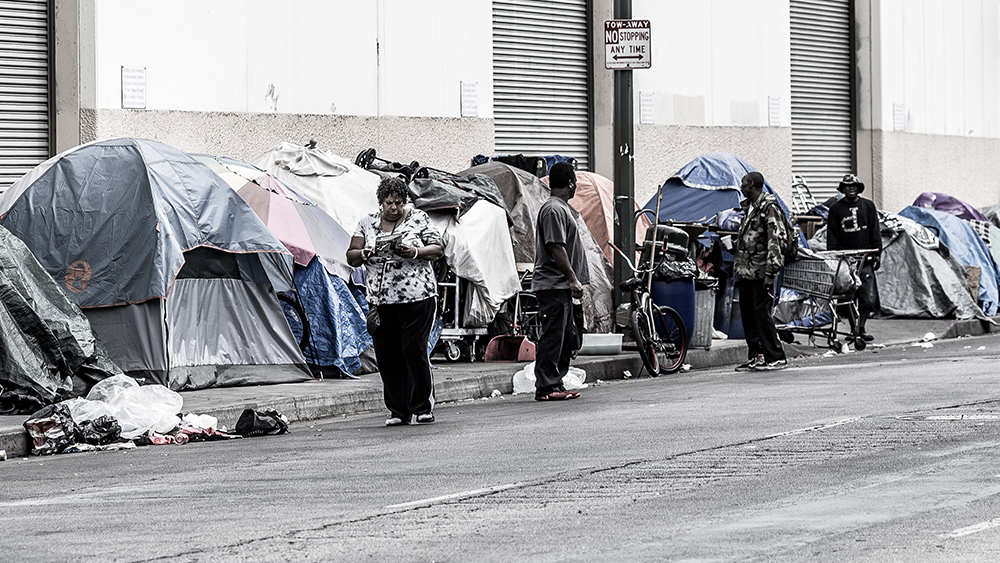Why 2024 will be “the year of chaos”
01/04/2024 / By News Editors

Many of us thought 2023 was a horrible year, and we are glad to bid it good riddance. 2024 certainly has started off as a year of chaos with a massive Japanese earthquake and tsunami. That is not the kind of event one can predict, so I am not suggesting, in the least, that it provides evidence for my “Year of Chaos” prediction for 2024. Rather, it symbolically foreshadows what I believe this year will look like everywhere due to all the pressures that built up in 2023 that still have to play through beneath whatever new troubles swoop in on top of us in a US election year that is certain in nearly every view I come across to be the most politically tumultuous and divisive year we’ve seen in our lifetimes.
(Article by David Haggith republished from TheDailyDoom.com)
I’ll go into how bad the election and other things will be and why in a “Deeper Dive,” but I want to cover the gist of these things here today because today’s news is flooded with stories that demonstrate why I think this will be “The Year of Chaos.”
The building economic collapse
Longtime readers know that I have predicted a total collapse of the Everything Bubble AND said it will take years to play out. So, the fact that it didn’t all happen in 2022 or 2023 is in keeping with my prediction. What we saw in those past two years was continual degradation of our economic fundamentals in that direction; but it’s like a Jenga game where the structure becomes more and more imperiled toward eventual full catastrophe, but it happens one piece at a time, and then calamity hits when it just cannot take any more degrading. No one, even those pulling the pieces, knows for sure when the Jenga puzzle will come down. What you can know is that it certainly is getting closer and closer to toppling as you see it waver more and more while the deconstruction continues.
The economy is far more complex and resilient than a Jenga structure, so we know a lot of pieces have to be removed before the global economic structure collapses. AT the same time, we know the Fed plans to remove a lot more support via its quantitative tightening, which Fed Chair Powell says will continue long after the Fed eventually starts lowering interest rates, which the Fed has NOT said it will do this year. What we can see is that pieces are continually being removed and some of them are significant. Here is what we can see in today’s news, alone, which is endemic of serious trouble throughout the US and global economy:
New data indicates there is worse to come from the banking crisis that began in 2023:
Buckle up everyone, the banking crisis only looks to be in the eye of the storm, so to speak.
Following the crisis that saw several banking giants fail earlier this year, we have seen some relative calm when it comes to bank closures and forced mergers. However, the worst has yet to occur, sources claim….
Banks are closing down their local branches at alarming rates and have laid off more than 60,000 workers in 2023 alone—does this look like healthy behavior to you?…
Vivek Ramaswamy recently warned of another 2008-style financial crisis fomenting:
“Bank of America is now providing *loans without down payment* for home buyers in “black & Hispanic Communities.” Mark my words: This act of “anti-racism” today will be called “systemic racism” tomorrow – when minorities end up defaulting on these loans….”
Customers of banks are being alerted to the impending wave of branch closures that is expected to occur in 2024. In the UK, the closure of high street bank and building society branches has been made worse by …
All of this is actually part of a longterm decline and restructuring of banking, some of it due to conglomeration:
In all, the number of bank branches in the U.S. has shrunk by more than one-fifth to just 78,000 today from nearly 100,000 in 2009. Soft profits and aggressive cost cutting mean still more Americans will see their local bank branch close its doors in 2024.
This does not mean calamity is front and center. Some of it is normal due to endless conglomeration, but many people quoted in the article see calamity coming. So, while the article is soft on data that proves a banking collapse is imminent, it certainly shows many people are fearing it, while all the recent announcements of branch closures enhance that concern.
Perhaps more significant than the fears talked about in that article is the solitary warning last year by JPMorgan’s chief, Jamie Dimon, who said we would see more bank collapses due to the crash in commercial real estate.
Deflating the real-estate balloon
Part of my predictions for the Everything Bubble Bust from its beginnings were a real-estate bust, including particularly commercial real estate. So, how is that implosion of the CRE balloon coming?
US office buildings face $117BN debt time bomb: Mortgages due this year threaten to sink US economy as thousands of workplaces remain empty….
Billions of dollars in loans on office buildings that are about to come due could play havoc with the US economy after interest rates soared.
The volume of defaults that will come out of that is going to place some serious pressure on banks — the kind Jamie Dimon warned was all but inevitable, and it is already causing a wave of defaults:
A big chunk of it is at risk of defaulting and costing banks and developers huge sums, sending some into insolvency….
Economists last month found 40 per cent of office loans on bank balance sheets were underwater – owing more than the property is worth…. Moody’s Analytics estimates 224 of the 605 loans that will expire soon will be tough to repay or refinance because their owners have too much debt or the buildings aren’t making them enough money.
This is simply what we KNOW is coming. Of course, if they can all hold on until the Fed starts cutting rates, they might make it through, but many don’t have much holding power left. Many have already lost it and flushed away. How long until more banks just cannot absorb it all? We’ll find out, as in the past, some Monday morning after the Fed and Feds cobbled together another massive rescue package.
Of course, this has a broader impact on the real-estate industry outside of what it does to banks that finance these projects:
The prospect of a widespread default and subsequent dips in demand could stifle construction and development in major US cities – many of which are still struggling to recover in the aftermath of the pandemic.
So, it erodes out a path to further recession of the kind we are already seeing.
How’s that recession coming?
Recession has been slow to arrive in the numbers because it is based on “Real GDP.” The US typically declares recession when GDP, adjusted for inflation, falls for two consecutive quarters, though it refused to do that in 2022. Because GDP is measured in dollars, you have to fully factor out inflation in order to get down to a measure of “Real Gross Domestic Production.” Nominal GDP is not used because it includes inflation, and the goal is not to measure inflation at all, but to measure production. So, when we have the grossly distorted (to the down side) inflation numbers that I explained in detail earlier this year, it becomes much harder for GDP to tank so much that GDP growth will go negative because uncounted inflation remains baked into the numbers. So, a lot of what GDP shows is phantom inflation, meaning actual inflation that no one measured correctly, so it was never seen in reports and so never subtracted from prices in calculating “real GDP,” though it was certainly part of prices paid.
Read more at: TheDailyDoom.com
Submit a correction >>
Tagged Under:
banking crisis, banks, Bubble, chaos, Collapse, debt bomb, debt collapse, economic riot, economy, Federal Reserve, finance riot, Inflation, market crash, money supply, panic, pensions, prophecy, Real Estate, recession, risk
This article may contain statements that reflect the opinion of the author
RECENT NEWS & ARTICLES
COPYRIGHT © 2017 PENSIONS.NEWS
All content posted on this site is protected under Free Speech. Pensions.news is not responsible for content written by contributing authors. The information on this site is provided for educational and entertainment purposes only. It is not intended as a substitute for professional advice of any kind. Pensions.news assumes no responsibility for the use or misuse of this material. All trademarks, registered trademarks and service marks mentioned on this site are the property of their respective owners.




















